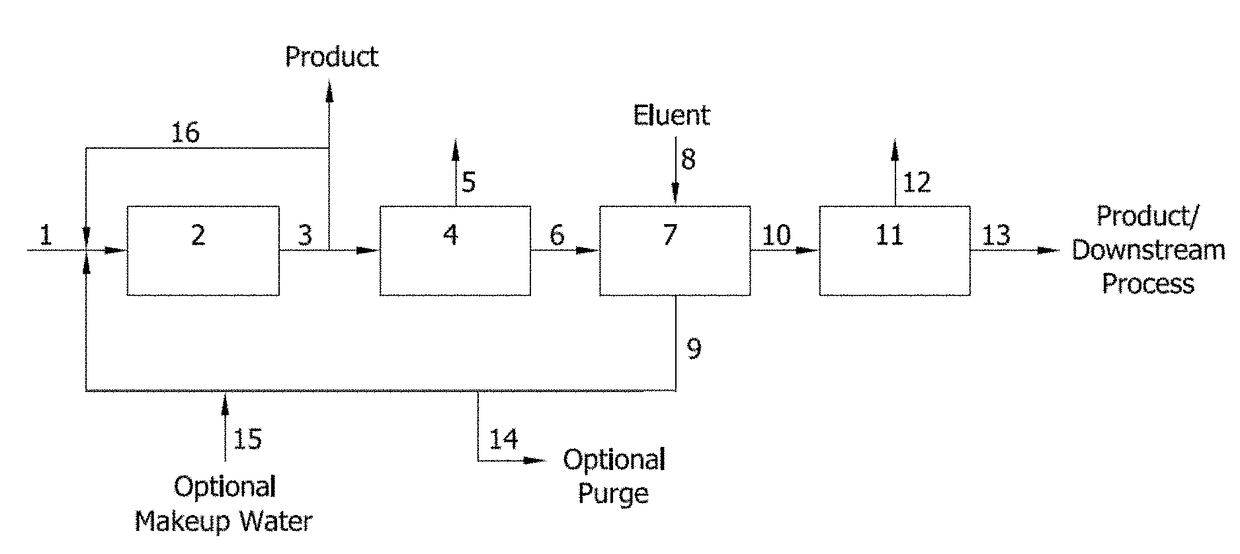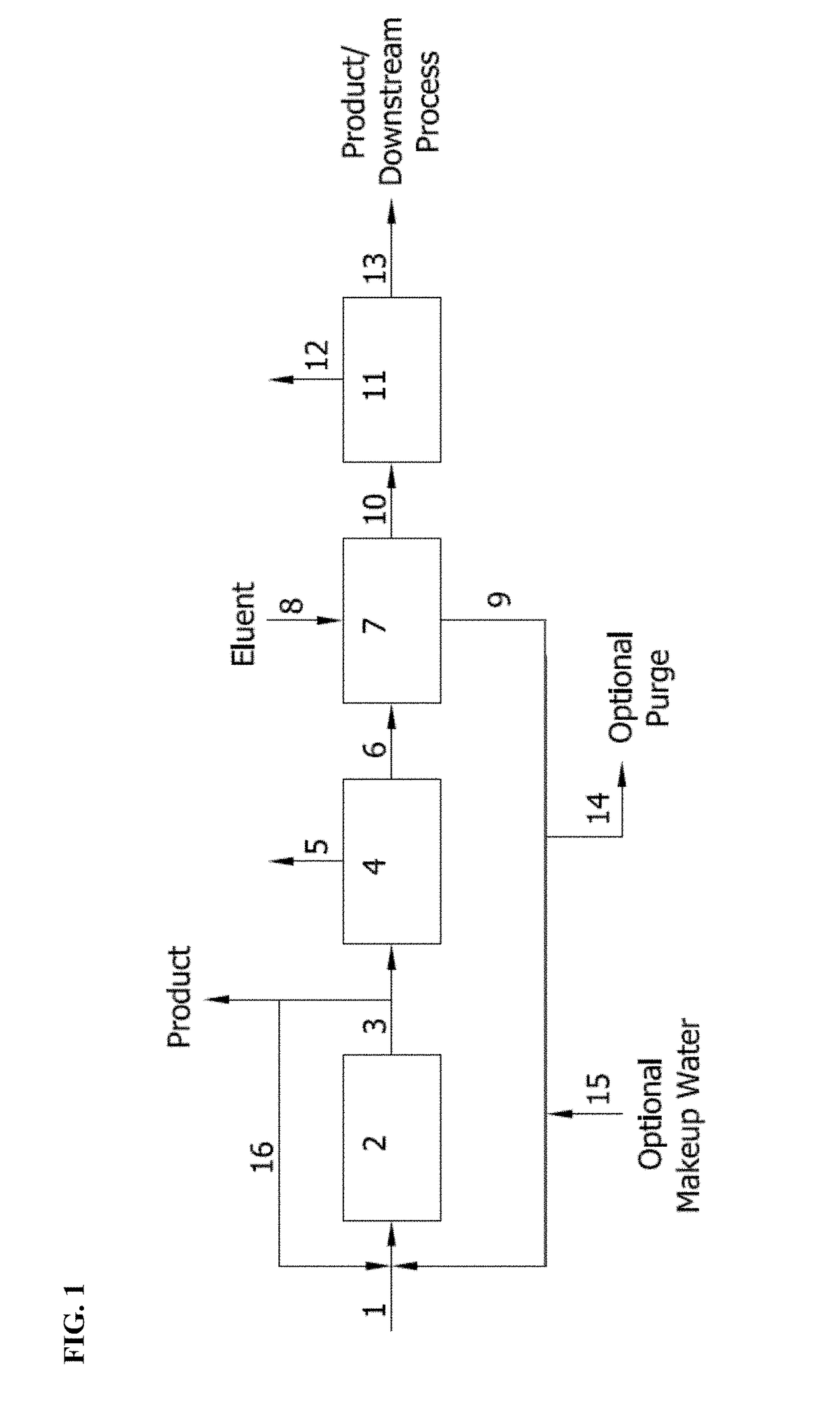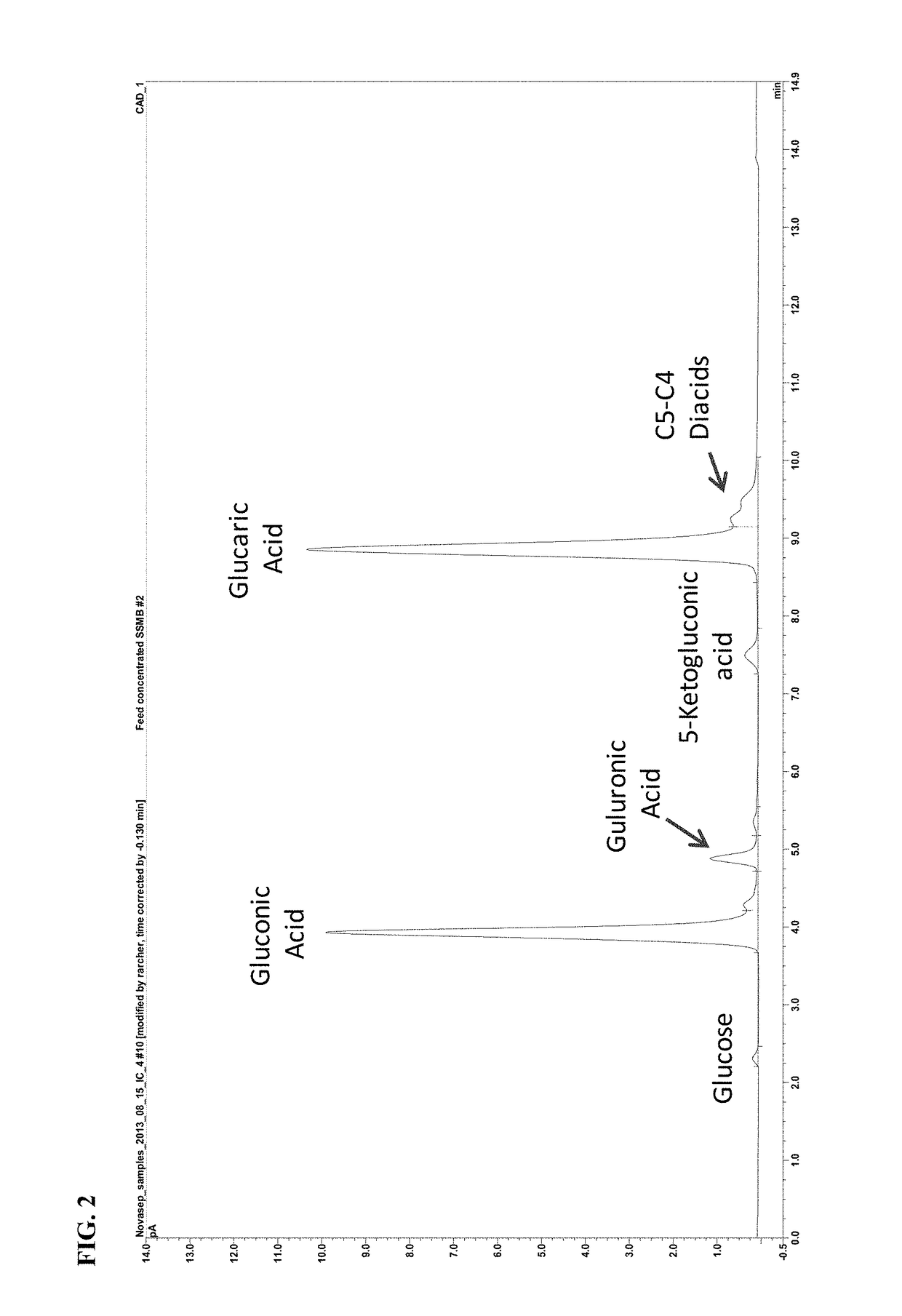Preparation and separation of a di-carboxylic acid-containing mixture
a technology of dicarboxylic acid and mixture, which is applied in the preparation of carboxylic compounds, separation processes, cation exchanger materials, etc., can solve the problems of increasing reagent costs, requiring disposal, and using strong acids, organic acids, bases or eluent components other than water that may be necessary to produce an effective separation and elution
- Summary
- Abstract
- Description
- Claims
- Application Information
AI Technical Summary
Benefits of technology
Problems solved by technology
Method used
Image
Examples
example 1
of Glucose to Glucaric Acid with Moderate Single-Pass Glucaric Acid Yield and High On-Path Percentage
[0146]137.8 g of carbon black powder (Monarch 700 supplied by Cabot) was added in multiple portions to an aqueous solution (603.5 g) containing 30.7 wt. % ADM Dextrose (DE 99) and 3.3 wt. % hydroxyethylcellulose (Sigma-Aldrich, SKU 54290, 2% in H2O). The mixture was stirred well to produce a paste. This paste was loaded into a syringe and the material was extruded into spaghetti-like strings with approximately 1.5 mm diameter. After drying in an 80° C. oven for 16 hours under a dry air purge, these strings were cut into small pieces about 6.0 mm long. Then they were treated at 800° C. for 2 hours after heating to 800° C. at a 5° C. / min temperature ramp rate under continuous N2 flow to produce carbon black extrudates.
[0147]To 91.5 g of these extrudates, an aqueous solution (32.0 ml) containing 0.73 g Au in the form of Me4NAuO2 and 1.10 g Pt in the form of PtO(NO3) was added. The mixtu...
example 2
n of Glucaric Acid from Gluconic Acid and other On-Path Intermediates
[0151]The sequential simulated moving bed (SSMB-6) system used for this example was built by Novasep and comprised six columns in which two different streams can be fed by two pumps, and two different outlets are connected to each column. Each column is equipped with five automatic valves. Each inlet stream is flow controlled and monitored, while the outlets are pressure controlled to ensure a steady flow rate in the columns, plus one loop control with pump and flow meter. The columns are jacketed to provide accurate temperature control. For each column, two inlet valves select the feed stream (feed or eluent), one valve allows the connection to the next column, and two outlets valves select the outlet stream (extract or raffinate). The six columns are connected in series.
[0152]The resin used for the sequential SMB (SSMB) separation was Lanxess Lewatit MDS 4368, a styrene / divinylbenzene cross-linked macroporous ani...
example 3
ng Test with Gluconic and Glucaric Acids Using Finex AA 543 Anion Exchange Resin in Oxalate, Glucarate, and Sulfate Forms
[0157]The overloading test provides information about the competitive absorption of glucaric acid and gluconic acid on a separation resin under overloading conditions and indicates the feasibility for the resin to be deployed in an industrial simulated moving bed chromatography system.
[0158]The overloading test was conducted using the equipment listed below:[0159]A chromatography column (1 m bed length and 2.5 cm diameter fitted with a double jacket).[0160]A water bath connected to the chromatography column double jacket for temperature control.[0161]A pump with a regulated flow rate control.[0162]A feed tank.[0163]An elution tank containing demineralized water.[0164]A fraction collector.
[0165]The chromatography column was packed with Finex AA 543, a 400-500 μm diameter acrylic divinyl benzene weak base anion exchange resin from Finex Oy, Kotka, Finland. The oxala...
PUM
 Login to View More
Login to View More Abstract
Description
Claims
Application Information
 Login to View More
Login to View More - R&D
- Intellectual Property
- Life Sciences
- Materials
- Tech Scout
- Unparalleled Data Quality
- Higher Quality Content
- 60% Fewer Hallucinations
Browse by: Latest US Patents, China's latest patents, Technical Efficacy Thesaurus, Application Domain, Technology Topic, Popular Technical Reports.
© 2025 PatSnap. All rights reserved.Legal|Privacy policy|Modern Slavery Act Transparency Statement|Sitemap|About US| Contact US: help@patsnap.com



